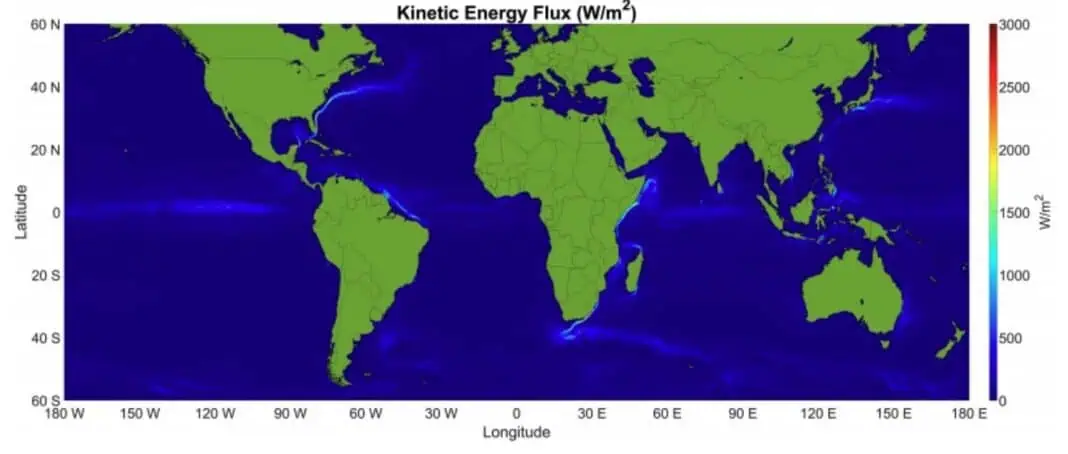Researchers have identified the prime locations for energy production in the earth’s oceans.
As global demand for electricity grows, humanity will need more and more electricity-generating sources. The oceans, which cover more than 60% of the earth’s surface, hold an enormous amount of energy in the form of waves and currents. Harnessing these could hold the answer to the growing need for electricity.
A research team from the College of Engineering and Computer Science at Florida Atlantic University used 30 years’ worth of data from NOAA’s Global Drifter Program (GDP) to identify and locate the best locations to generate ocean energy.
Commenting on the results of the study, Mahsan Sadoughipour, the first author and graduate research assistant in the College of Engineering and Computer Science, stated:
“Our study revealed that about 75% of the total high-power density areas, covering around 490,000 square kilometers of the ocean, have energy levels between 500 and 1,000 watts per square meter. This suggests there’s a lot of potential for harvesting energy from ocean currents, especially in regions where power densities are moderate yet significant for sustainable energy production. Our study also provides insights into the factors that can influence the accuracy of energy generation estimates such as environmental conditions and measurement methods.”
While Yufei Tang, the study’s co-author and an associate professor at FAU’s Department of Electrical Engineering and Computer Science, added:
“Regions like Brazil and South Africa have limited data available, which affect the accuracy of energy predictions, making it harder to fully assess their potential for energy extraction. Expanding data collection will refine our understanding and unlock the full energy potential. For example, region-specific studies using acoustic Doppler current profilers could better estimate energy production for submerged turbines.”
Additionally, Stella Batalama, the dean of the College of Engineering and Computer Science, stated:
“Accurate estimates of ocean current energy rely on critical factors such as data density, data type and flow variability. Findings from this study highlight the need to carefully consider these variables, and the provided energy characteristics will help ensure that ocean current energy can be efficiently integrated into the broader renewable energy landscape.”
You can find the original research here.

